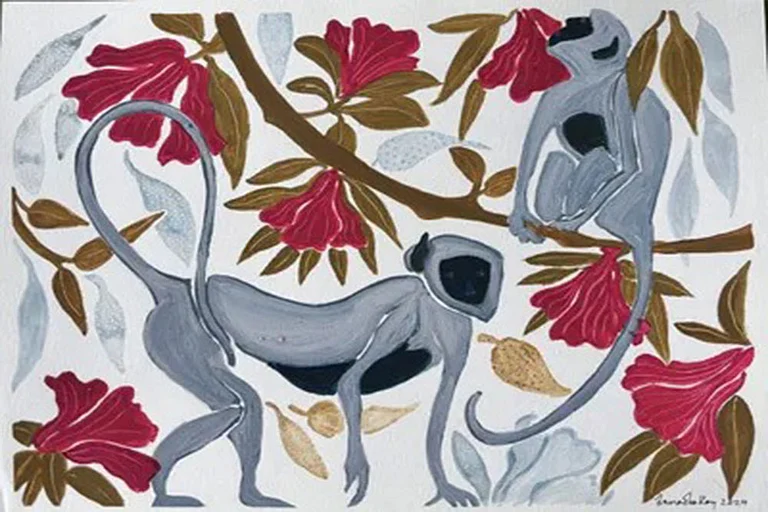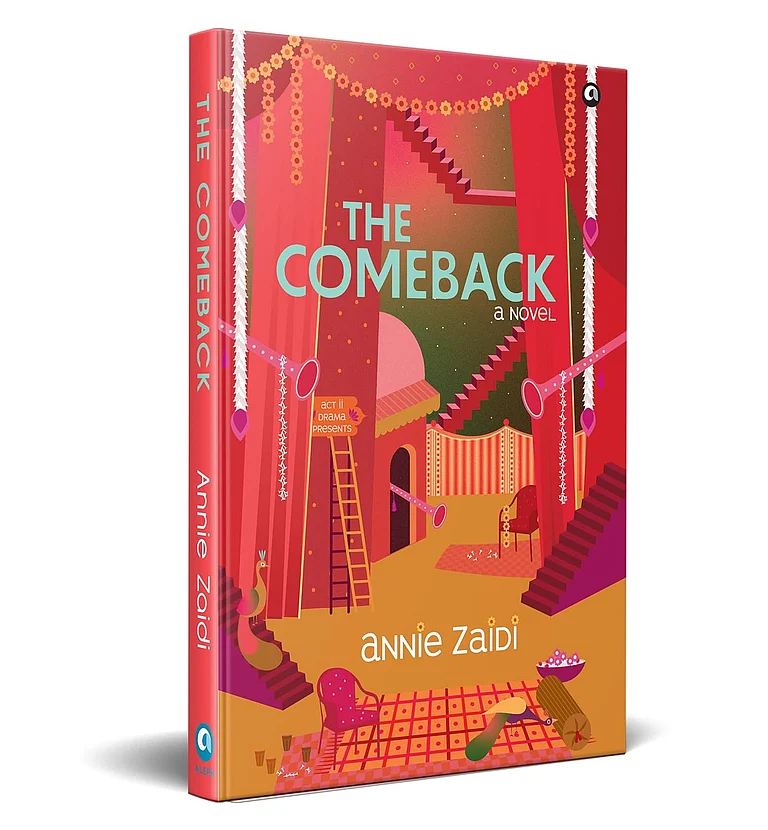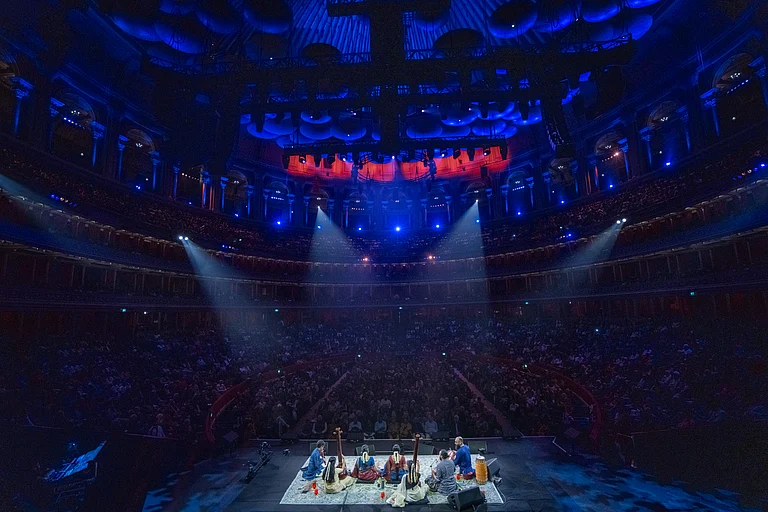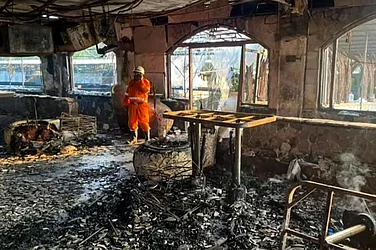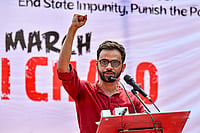Major Ravi: “What amazed me was how men like Abdul Aziz and Sylvester, the fisherman from Manassery, put their lives at risk to go out and help people.”
Kesari chief editor: “(RSS-affiliated) Seva Bharati rescued the vicar and others stranded in Unni Mishiha church, and many from Kunnatheri’s Darul Islam madrassa.”
Prof Hameed Chennamangaloor: “Though Kerala acted in unison, the same was not seen with the political parties. No party washed the office of another party.”
***
Blasphemous as it may sound, for a brief while, during the great flood, it seemed as though God had abandoned Kerala. The flood’s wrath didn’t spare temples, churches or mosques—a few even crumbled and fell. And as the furious deluge loosed itself, destroying all in its path, religious rituals were disrupted for days. A strikingly positive narrative, however, emerged from the midst of the destruction and sorrow.
Kerala has never been torn asunder by riots, but a simmering, low-grade animus between communities keeps its social mosaic under strain. And recent years have not been propitious times for social harmony, with embittered attitudes visibly increasing all around.
Then came the flood. Thrown into the swirling waters together, reduced to mere humans seeking survival, scores shrugged off their religious prejudices and reached across caste barricades to save one another. The crisis struck around Onam, a pan-Kerala festival with unifying tendencies, and perhaps fittingly it saw people rescuing a lost sense of harmony and collectivity from the material wreckage.
Ambili, 47, and her husband Kuttykrishnan had recently rented a one-storey house in Elookara, Aluva, near Kochi, and hardly knew anyone in their neighbourhood. But as the waters rose on August 15, neighbours Ashraf and Shani asked them to come over to their two-storeyed house. That invitation to sleep over saved the Kuttykrishnans and their daughter. Next morning, they found the water level riding over one metre, threatening to submerge their house across the road.
A Muslim neighbour reaching out to Hindu families, or vice versa, and Dalit Christian fishermen from the coast riding the waters upland in their fishing boats to rescue others—it was as if the flood had also washed away some stains in Kerala’s collective soul. Animosities whipped up by bigots gave way to a sense of shared Malayali identity. Even the RSS’s Malayalam mouthpiece Kesari, chiming with the general mood, published a critique of the Centre’s response (withdrawn later).
Other Hindutva proponents too had heart-warming experiences beyond their usual silos. When Major Ravi—a former armyman turned film-maker whose voice clip was doing the rounds on WhatsApp a few months ago, urging Hindus to “awake and show their strength”—stepped out of his comfort zone to rescue others, it was indeed sweet irony that he was directed to Muslim-dominated areas. On the morning of August 16, after watching the floods tearing across the state on television, Ravi called up the state police chief and offered his help. He was told to go to Binanipuram police station. “When I reached, I knew the situation was grim,” he says. “The police were not equipped with boats. Abdul Aziz, a young man waiting there with a rubber tube, told me that a pregnant woman and a child were stranded in a house. He had ensured the safety of his own family and was now out to rescue strangers. Since I am an expert swimmer, I decided to go with him.”

Major Ravi (centre) and fisherman Sylvester holding hands during a rescue operation near Kochi
He had assumed he would pitch in for a while and then get back home. He was not prepared for the harrowing ordeal he was about to face. Aziz and he had to navigate through treacherous waters as the swift current dragged everything in its path. “In some places, the compound walls were gone, in other areas the walls gave way when we touched them, and twice I was nearly sucked into wells and had to swiftly kick the sides of the well to get out. Competing with us for survival were snakes and centipedes, all rushing past in a frenzy,” says Ravi.
Read Also: Flood Diary: A Reporter's Tale
With great effort, the duo managed to reach Hidyathul Athfal madrassa at Elookara, where 16 men were stranded on the first floor. Ravi and Aziz joined them. “When I entered the mosque, people looked at me askance, as if I was a Hindu terrorist. But I assured them I meant well and had come with Aziz to help. They were immediately comforted. That evening, we received a pot of rice gruel from the house next door. We shared the food, and even the plates.” Close by, a mosque had taken in over 200 people from different communities.
With Ravi leading them, like a commando, they brought women and children from the surrounding areas to the safety of the madrassa. As night fell, Ravi donned the only available spare clothing—a madrassa teacher’s dhoti and t-shirt, and the men slept fitfully, bundled close to each other on prayer carpets spread on the floor. Being a diabetes patient, Ravi needed to get home as quickly as possible to take his medication. So, he and a few men ventured out into the floodwaters the next morning. On the way, they met a flock of fishermen led by Sylvester from Manassery on two boats—Mary Matha 1 and 2—on a rescue mission. “What amazed me was how men like Aziz and Sylvester put their lives at risk to go out and help people,” says Ravi.
Sylvester and his son Joseph Sibi, sitting in their home in Manassery, had seen the images of women and children crying out for help. A group of fishermen were volunteering to go, and Sylvester immediately offered both his boats for the rescue operations. With the help of the police, they managed to transport the boats to Aluva, where the river Periyar was flooding the surrounding areas at great speed. It was when they reached Eloorkara that they were joined by Ravi. And Ravi spent the next two days with the fishermen rescuing scores of people. Someone had to fetch him his diabetes medicines on the second day.
As the flood worsened, most religious places on higher ground across the state opened their doors to those seeking shelter. Religious houses doubled up as camps—nearly 6,000 in number, housing over a million—and refugees across denominational lines cohabited in harmony. Says Dr Prathvimraj B.U., an assistant professor in community medicine who was leading a team of doctors around the camps of Pathanamthitta and Alapuzha districts, “There was communal harmony in every camp we visited. Everyone was treated equally. In two camps, there were labourers from Bihar and Bengal, and they also got the same treatment. At one church which was turned into a camp, near Mannar, we were eating a simple meal of rice gruel and lentils on the day of Eid. My student, a Muslim, told me it was perhaps the best Eid he had celebrated.”

Eid at a church turned relief camp near Mannar
Says a revenue officer, “The camps became a gathering place where people learnt about the other religious communities, changing their perception to a large extent. It became an opportunity to understand how other communities lived their lives.” A Hindu who had recently begun to harbour ill-feelings about the Muslim community confessed to this correspondent that he had changed. “I was overwhelmed by the way people reached out to each other and how people lived in such harmony in the camps,” he says. “The floods swept away the horrifying polarisation that was beginning to strangulate Kerala. I know deep down I will not be swayed by any religious bigotry anymore. To a large extent, polarisation will not be happen in Kerala at least for the next five years.”
Kesari chief editor N.R. Madhu felt the flood awakened people’s social conscience. “Keralites became a shining example of how people help each other without considering caste or religion,” he says. “Seva Bharati (the RSS’s community service organisation) rescued the vicar and others stranded in the Unni Mishiha church and people stranded in Darul Islam madrassa at Kunnatheri. In some places, it provided food until the water levels receded. The floods had tugged at the conscience of people at a very deep level and what we saw was the face of humanity. There was no religious or caste untouchability, but political untouchability continues to prevail in the state.”
As people returned to their homes during the aftermath, youth volunteers organised themselves to clean up houses. The Samastha Kerala Sunni Students Federation, a Muslim organisation, was allowed to clean a few flood-affected temples and their premises, filled with slush and dirt, in Palakkad, Wayanad and Ernakulam districts. Volunteers not associated with any organisation also sprang up to clean religious places and houses.
Prof Hameed Chennamangaloor, a social critic, points out that though Kerala acted in unison, the same was not seen with political parties. “No political party washed the party office of another political party,” he says. Chennamangaloor says it is very clear that it’s the politicians who divided the people for electoral gains.
Will the harmony endure? Well, a corollary was seen in the united support for the protest against alleged sexual exploitation and rape of a nun by a bishop. The nuns’ protest meet, which would normally have been confined to one religious group, acted instead as a unifying platform. The women’s wing of the Welfare Party of India came to the protest meet to express solidarity with the protesting nuns, so did women and men from other religious communities. Not everyone sees this as a continuation of the unison forged by the flood, but social scientists say it’s a sign that people have become more conscious of each other’s problems.
“The floods forced us out of our comfort zone,” says a lawyer who did not want to be named. “I was too busy caught up in my life, and my wife, a doctor, usually returned home late at night. During the floods we opened our house to the public so people could be treated at my home. I am no longer a stranger here, everyone knows me.” Ambili Kuttykrishnan too says she is no longer a stranger in a largely Muslim-populated area. “People drop by now, almost on a daily basis, to enquire how we are doing,” she says. It’s as if the same floods that created havoc was also instrumental in a great social awakening—for those precious moments, it created a world not broken up into fragments by narrow domestic walls, like the poet hoped. “When I rescued an elderly couple, the man told me he had never seen God, but now he knows what he looks like. That made me cry,” says Major Ravi. As Keralites cried, it seemed they did not have to look to the heavens for help, they found divinity in each other.
By Minu Ittyipe in Kochi







